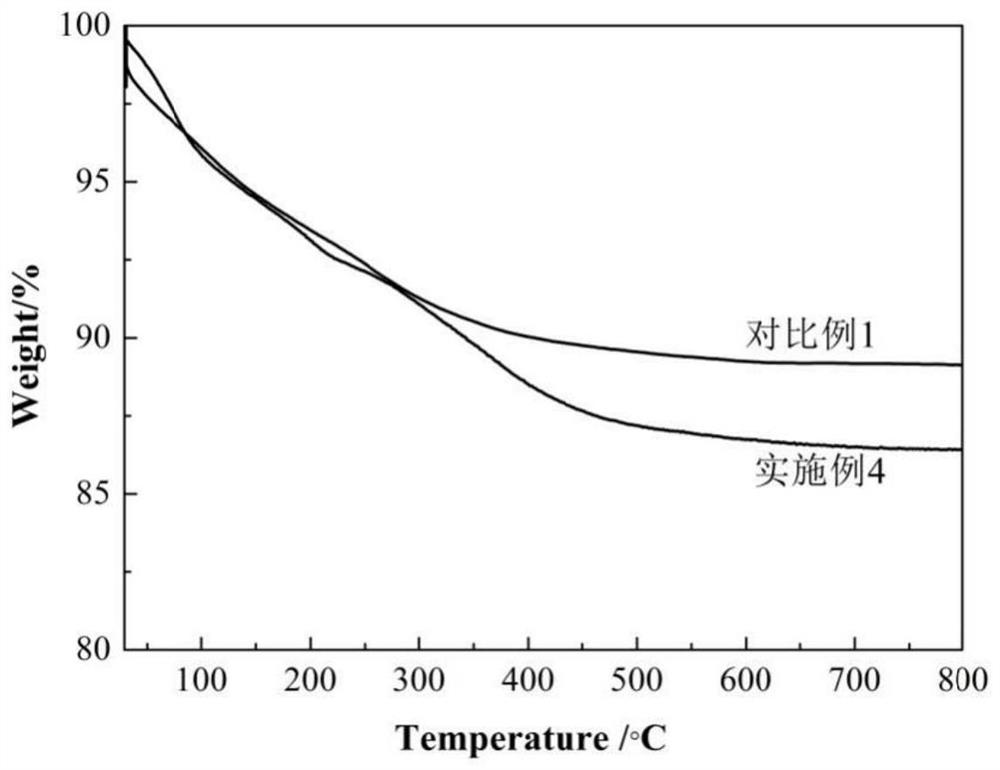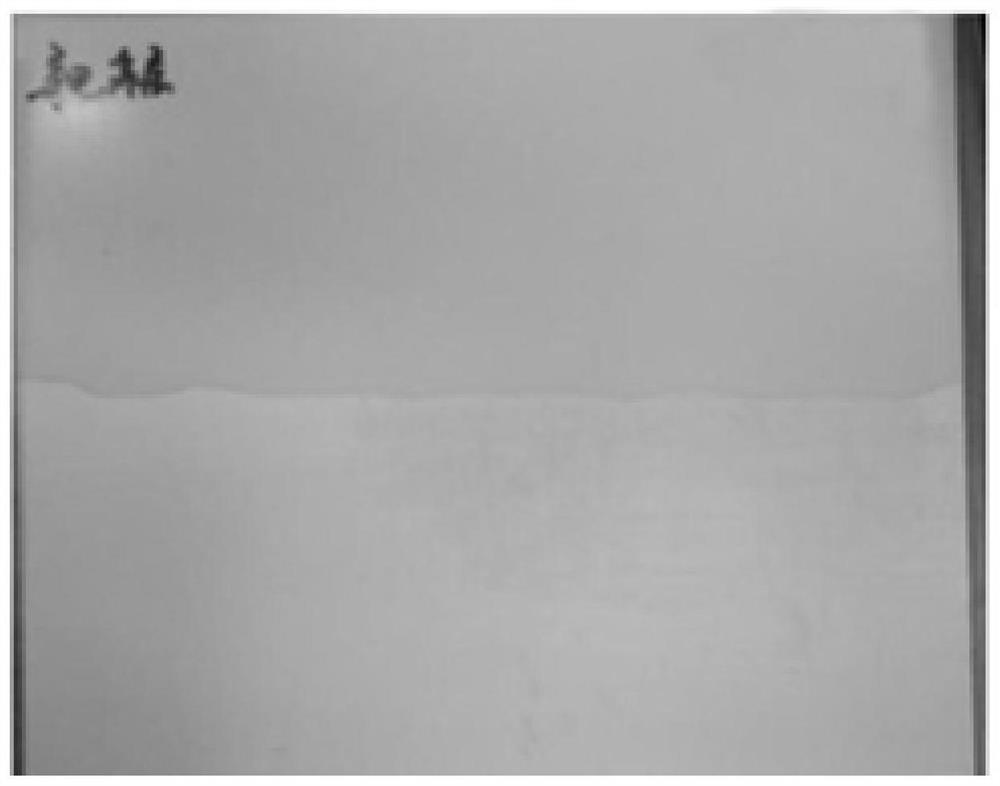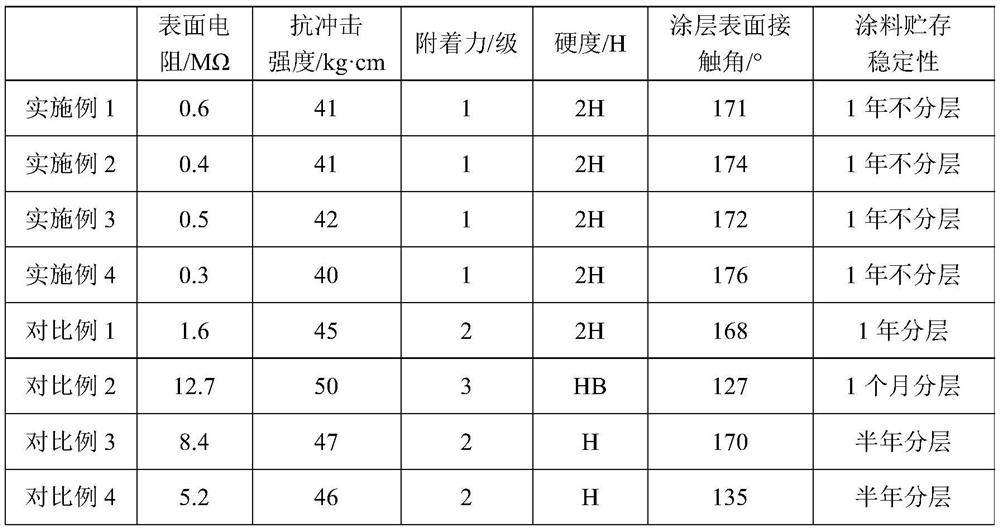A kind of surface modification method of conductive material and its application in polyacrylate coating
A polyacrylate emulsion, conductive material technology, applied in conductive coatings, coatings, fibrous fillers, etc., can solve the problems of delamination, poor conductive and mechanical properties of coatings, short storage period of conductive coatings, etc. Effects of dispersion stability, improvement of interfacial bonding properties, and reduction of the number of hydrophilic groups
- Summary
- Abstract
- Description
- Claims
- Application Information
AI Technical Summary
Problems solved by technology
Method used
Image
Examples
Embodiment 1
[0018] 1. At room temperature, while stirring, spray 0.3 kg of methyltrichlorosilane into 10.0 kg of attapulgite / polyaniline composite conductive powder (the preparation method is Chinese invention patent CN201710578196.6 Example 4); after spraying , quickly and continuously feed ammonia gas into the silane-modified conductive powder for 20 minutes of adsorption reaction, wherein the flow rate of ammonia gas is controlled to be 0.03 cubic meters per second, and the amino-functionalized modified conductive powder is obtained;
[0019] 2. Take 10 kg of amino-functionalized modified conductive powder and disperse it in 200 kg of deionized water. While stirring, add 0.2 kg of aminotrimethylene phosphonic acid to the system, continue to stir and react for 30 minutes, then filter and wash. Dry and pulverize at 60°C to obtain organic acid-modified conductive powder;
[0020] 3. Take 30 parts of polyacrylate emulsion (the preparation method is Chinese patent CN201810875363.8 Example 1...
Embodiment 2
[0022] 1. At room temperature, while stirring, spray 1.0 kg of 3-chloropropyl trichloride into 10.0 kg of three-dimensional attapulgite-mica-based conductive composite material conductive powder (the preparation method is Chinese invention patent CN201710594663.4 Example 1) Silane: After spraying, quickly and continuously feed ammonia gas into the silane-modified conductive powder for 35 minutes of adsorption reaction, wherein the flow rate of ammonia gas is controlled to be 0.065 cubic meters per second, and the amino functionalized modified conductive powder is obtained ;
[0023] 2. Take 10 kg of amino-functionalized modified conductive powder and disperse it in 50 kg of deionized water. While stirring, add 1.0 kg of aminotrimethylene phosphonic acid to the system, continue to stir and react for 60 minutes, then filter and wash. Dry and pulverize at 80°C to obtain organic acid-modified conductive powder;
[0024] 3. Take 50 parts of polyacrylate emulsion (preparation metho...
Embodiment 3
[0026] 1. At room temperature, while stirring, spray 0.65 kg of methyltrichlorosilane into 10.0 kg of attapulgite-mica / polyaniline conductive composite conductive powder (the preparation method is Chinese invention patent CN201710578228.2 Example 1); After spraying, rapidly and continuously feed ammonia gas into the silane-modified conductive powder for 30 minutes of adsorption reaction, wherein the flow rate of ammonia gas is controlled to be 0.1 cubic meters per second, and the amino-functionalized modified conductive powder is obtained;
[0027] 2. Take 10 kg of amino-functionalized modified conductive powder and disperse it in 100 kg of deionized water. While stirring, add 0.6 kg of aminotrimethylene phosphonic acid to the system, continue to stir and react for 45 minutes, then filter and wash. Dry and pulverize at 70°C to obtain organic acid-modified conductive powder;
[0028] 3. Take 40 parts of polyacrylate emulsion (preparation method is Chinese invention patent appli...
PUM
 Login to View More
Login to View More Abstract
Description
Claims
Application Information
 Login to View More
Login to View More - R&D
- Intellectual Property
- Life Sciences
- Materials
- Tech Scout
- Unparalleled Data Quality
- Higher Quality Content
- 60% Fewer Hallucinations
Browse by: Latest US Patents, China's latest patents, Technical Efficacy Thesaurus, Application Domain, Technology Topic, Popular Technical Reports.
© 2025 PatSnap. All rights reserved.Legal|Privacy policy|Modern Slavery Act Transparency Statement|Sitemap|About US| Contact US: help@patsnap.com



